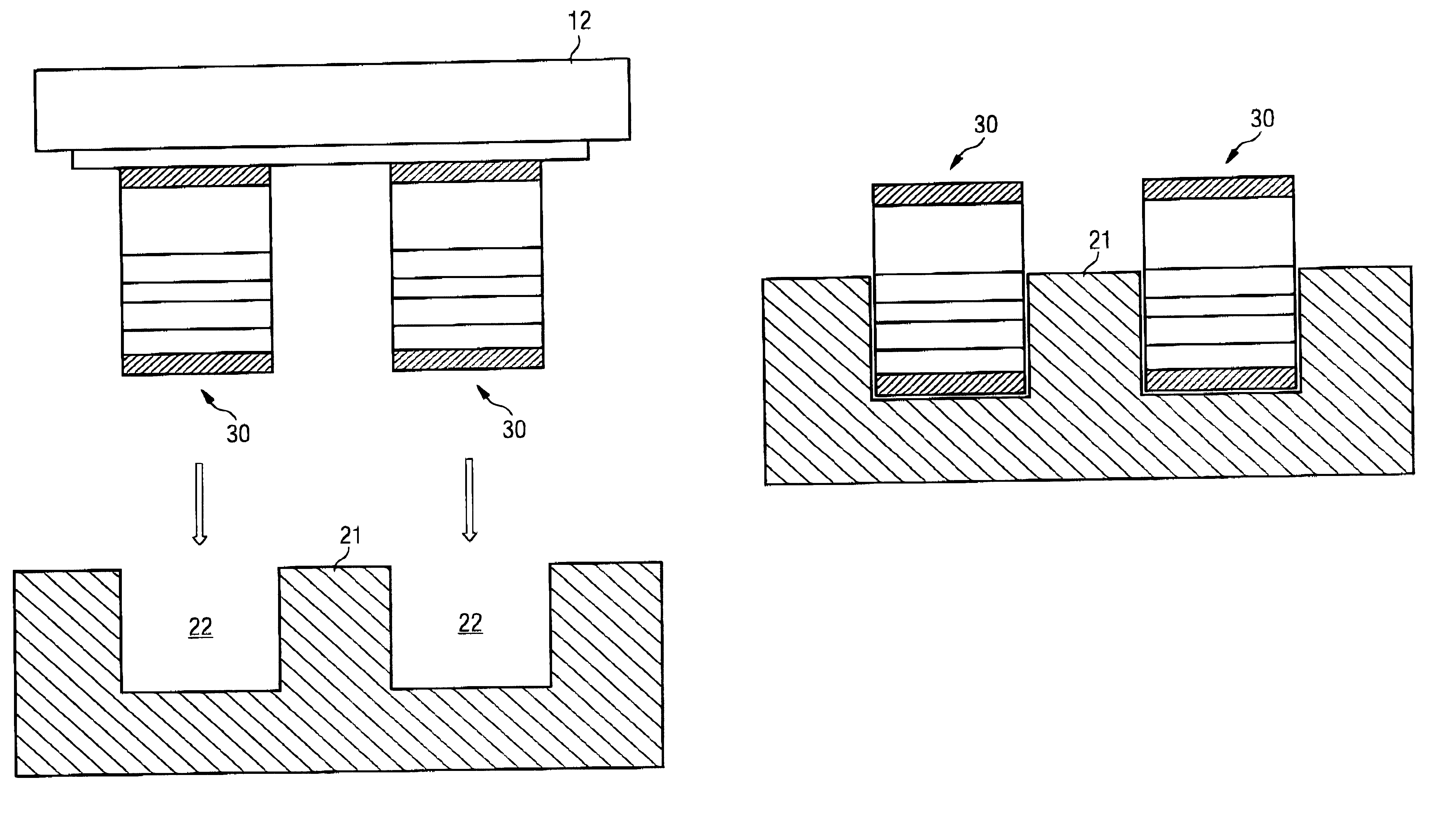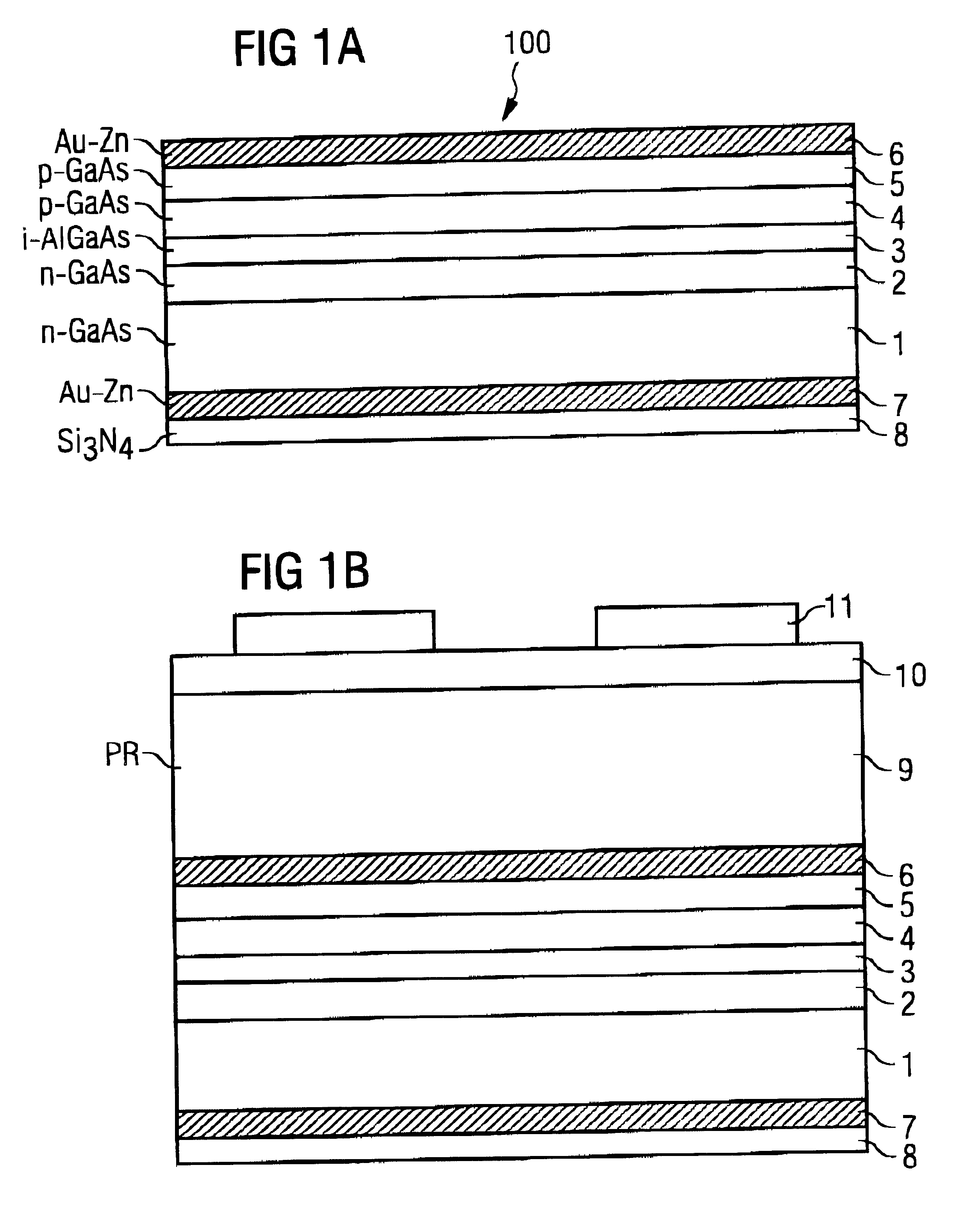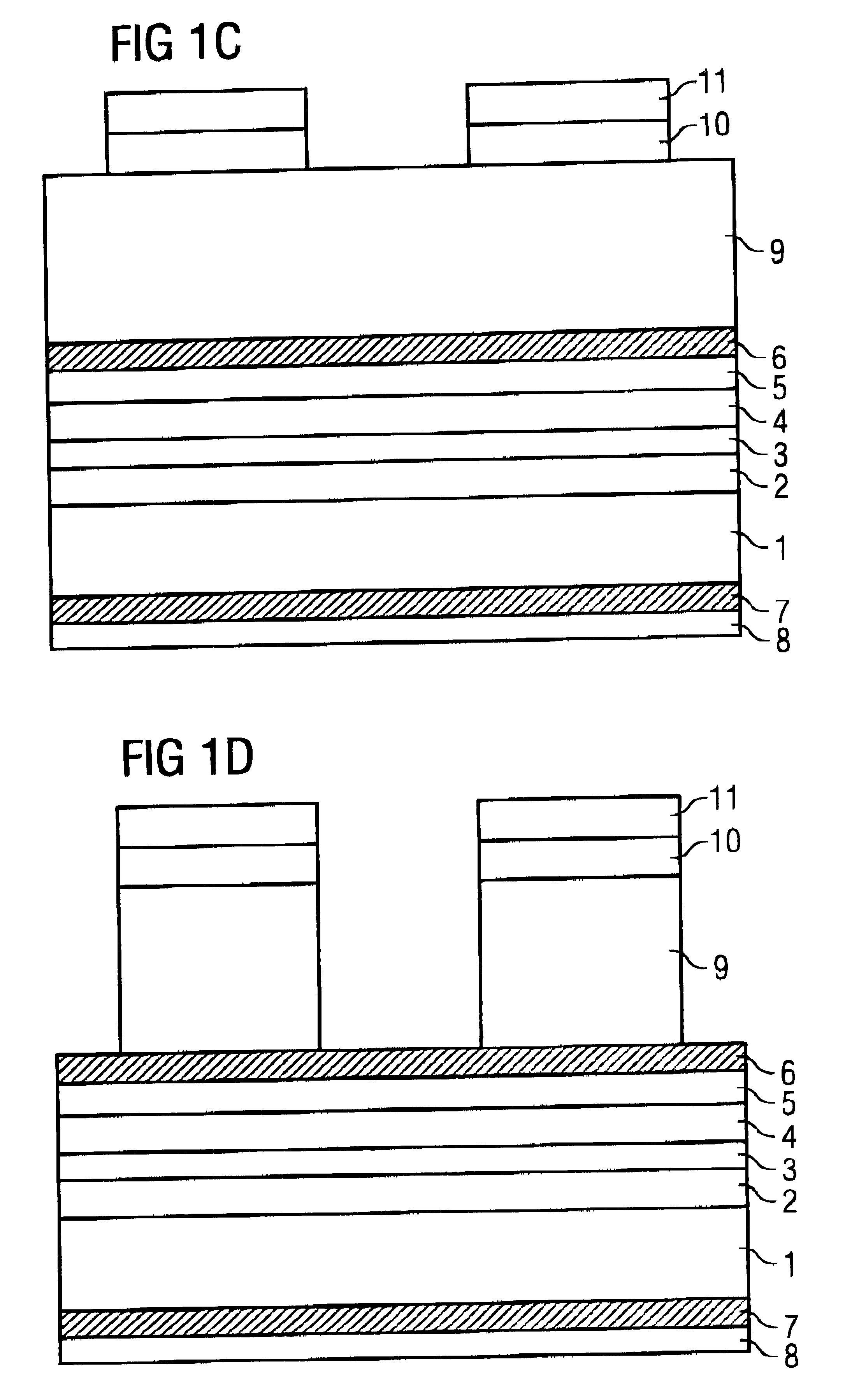Method for formation and production of matrices of high density light emitting diodes
a light-emitting diode and high-density technology, applied in the direction of basic electric elements, electrical equipment, semiconductor devices, etc., can solve the problems of poor luminosity, directional dependence of visual impression, slow response speed,
- Summary
- Abstract
- Description
- Claims
- Application Information
AI Technical Summary
Benefits of technology
Problems solved by technology
Method used
Image
Examples
Embodiment Construction
Reference is now made to the figures of the drawings wherein identical or functionally equivalent elements are identified by the same reference numerals. The method according to the invention comprises essentially therein steps for producing periodic deepening pattern by photolithography and reactive etching techniques in a semiconductor device which comprises a LED structure. In further steps, Pillars and pilasters of the semiconductor material are left between the slots, from which the thinned out microscopic semiconductor LEDs are produced. GaAs may be used as a base semiconductor material as set out in more detail below.
First, production of a semiconductor light emission device 100 is set out with initial reference to FIG. 1A. As depicted herein, a n-doped (interference density approx. 10.sup.18 -10.sup.19 cm.sup.-3) GaAs wafer 1 (diameter 2 inches) with a thickness of approx. 100 .mu.m is used as an initial material. A plurality of layers are applied on both sides of the wafer,...
PUM
 Login to View More
Login to View More Abstract
Description
Claims
Application Information
 Login to View More
Login to View More - R&D
- Intellectual Property
- Life Sciences
- Materials
- Tech Scout
- Unparalleled Data Quality
- Higher Quality Content
- 60% Fewer Hallucinations
Browse by: Latest US Patents, China's latest patents, Technical Efficacy Thesaurus, Application Domain, Technology Topic, Popular Technical Reports.
© 2025 PatSnap. All rights reserved.Legal|Privacy policy|Modern Slavery Act Transparency Statement|Sitemap|About US| Contact US: help@patsnap.com



